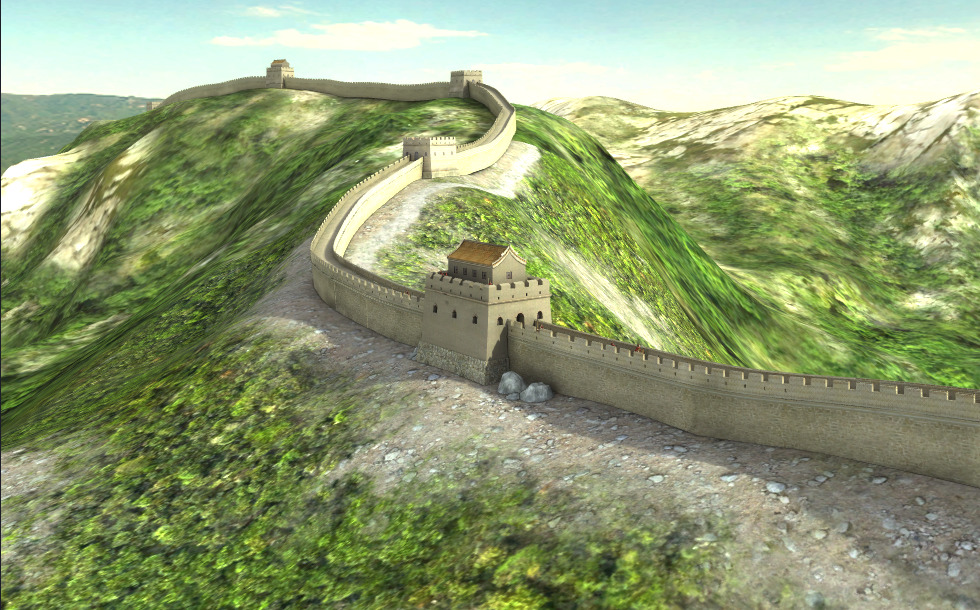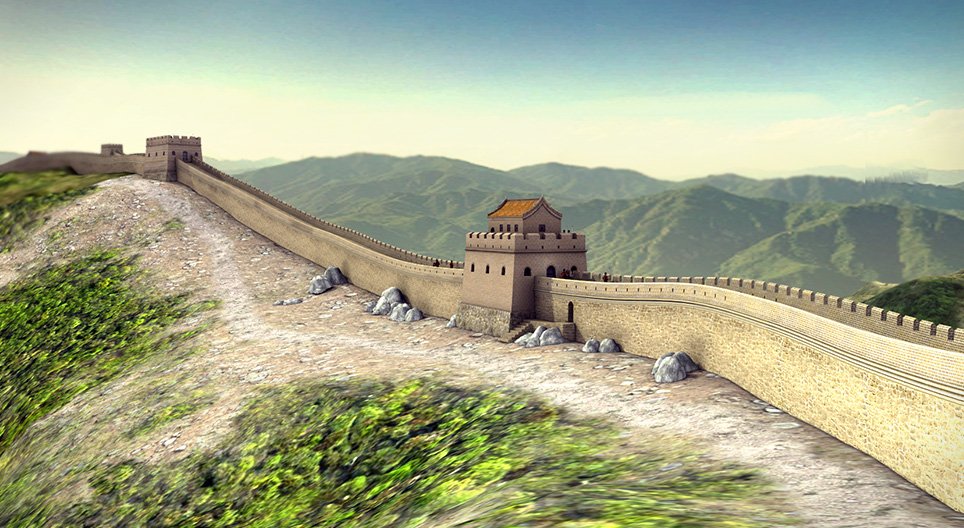Great Wall of China
Great Wall of China
A series of fortifications built to prevent incursions from northern nomadic groups.
1.-12. klase
mozaLink
/Tīmekļa saite
Ainas

Great Wall of China
- watchtower
- beacon tower
- wall section

Watchtower

Structure of the wall
- rammed earth and gravel
- brick-paved walkway
- height: 10 m
- width: 4 m

Structure of the watchtower
- height: 12 m
- lodge of guards
- central room
- entrance
- parapet
- Chinese soldier
The Great Wall is a series of fortifications built along the northern border of China. The construction of the wall was ordered by the first Emperor of China, Qin Shi Huang, in the 3rd century BC, to prevent incursions from northern nomadic groups. The wall was built to make use of natural features, it was erected on the ridges of hills and mountains. With numerous new sections of wall and fortifications being added over later centuries, the construction was only finished in the 17th century.
The wall has never formed one single structure. The early sections of the wall were built from packed earth and stones. Towers and bastions were constructed at regular intervals at a distance of a bowshot. Sections visible today were added later and made of brick. The defensive function of the impenetrable walls was further strengthened by the communication towers: guards lit bonfires and sent smoke signals to each other to spread news quickly.
The average height of the monumental structure was 10 metres, and its width was 4–5 metres. Different numbers are provided by different sources for the total length of the sections, but the most widely accepted estimate is about 7,000 km. This is the reason why the wall has a reputation for being the only work made by human hands on the globe visible from the Moon. In fact, this is not true, since the wall is not wide enough to be seen from a great distance with the naked eye.
Although it fulfilled its purpose, the famous structure has fallen into decay over the centuries. It has been destroyed by natural disasters, and by local peasants, who dismantled it brick by brick.
Today, only a short section of the wall is intact, which has been restored for the sake of tourists. The Great Wall is still the best-known symbol of China; it was added to the list of UNESCO World Heritage Cultural Sites in 1987.

